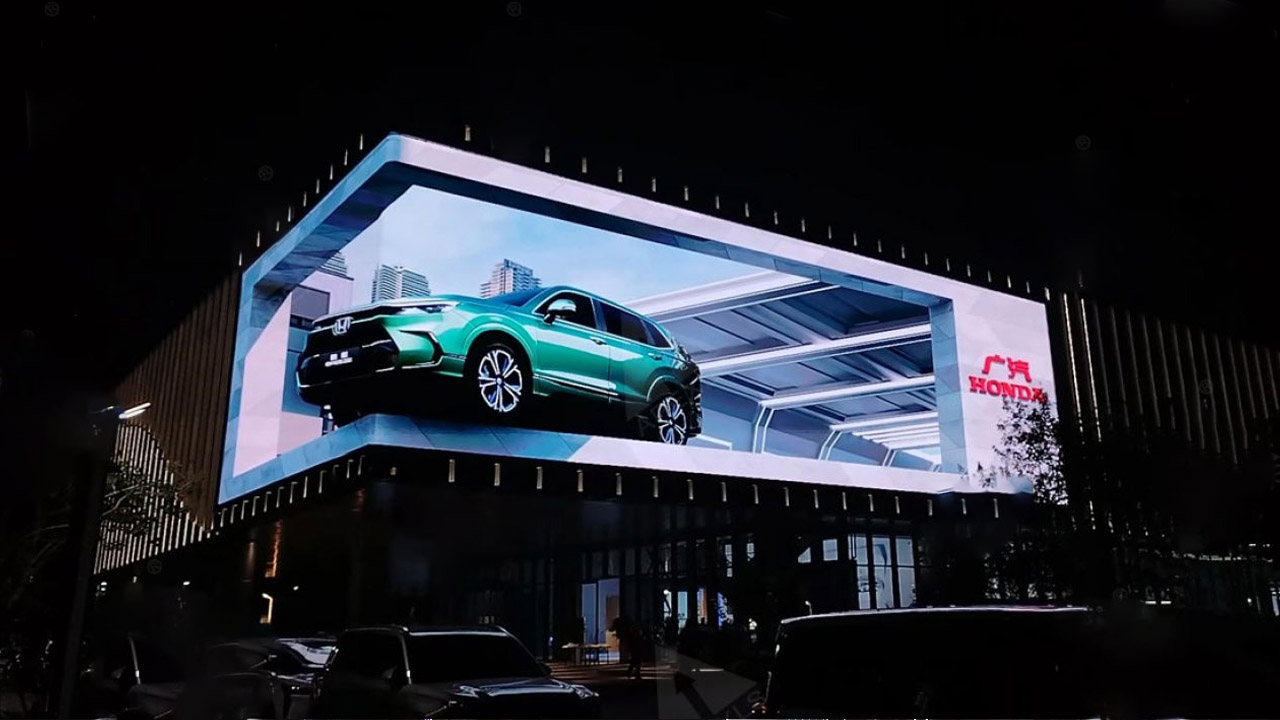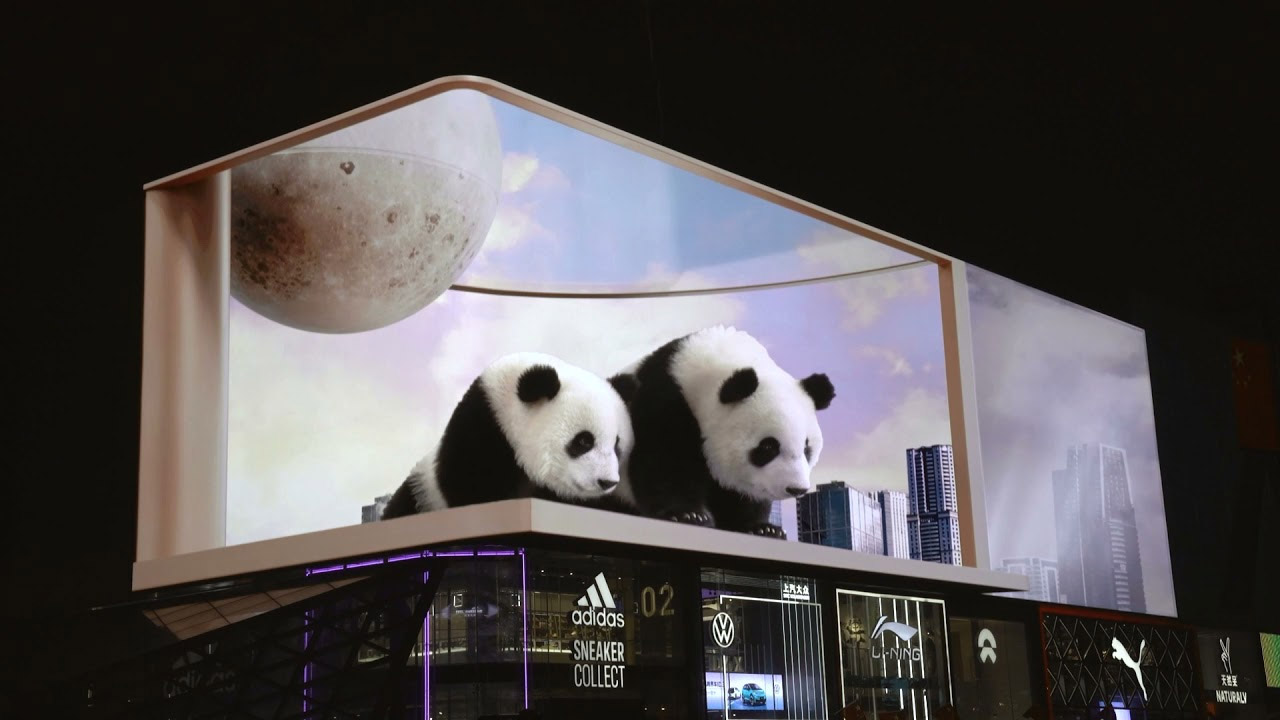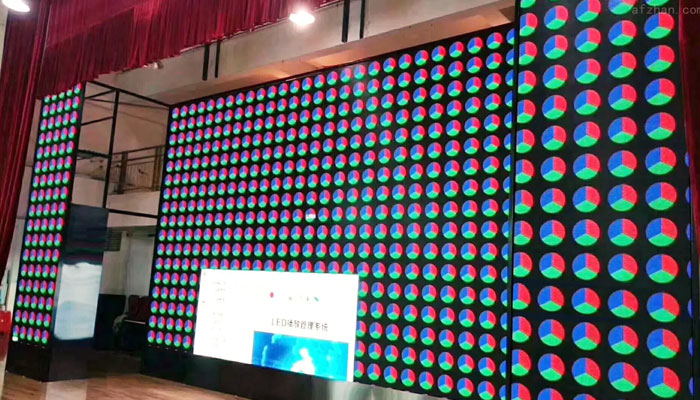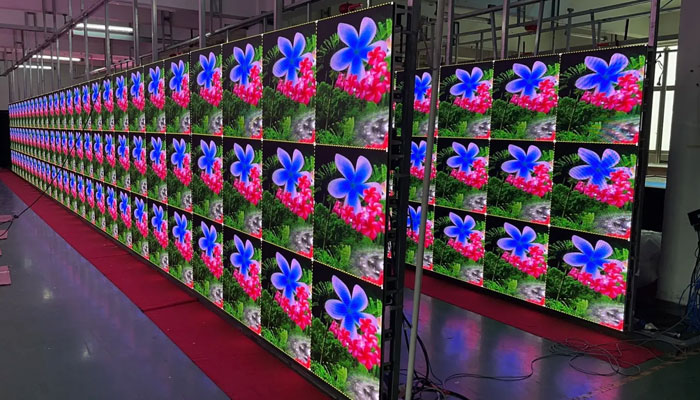On the streets, the dazzling and eye-catching visuals of 3D billboards attract a lot of attention, and an increasing number of companies are choosing to rent 3D billboards to enhance their advertising effectiveness.
Purchasing a 3D billboard has become an attractive investment opportunity. What is the specific cost of installing a 3D billboard? Is this business suitable for your investment? Through this article, you will gain a better understanding.

Initial Factors Affecting 3D Billboard Costs
Production materials
The primary purchase cost of a 3D billboard is closely tied to its production materials. Higher-quality LED chips, driver ICs, and other components naturally result in higher costs.
The excellent basic performance of a 3D billboard relies on high-quality production materials. The quality of these materials determines the subsequent operational performance, lifespan, and display effects of the 3D billboard.
Packaging Technology
Common LED packaging technologies include SMD, COB, and GOB. Different packaging technologies result in varying production for 3D billboards cost.
SMD technology is mature and suitable for mass production, with good heat dissipation properties, making it applicable for most indoor and outdoor 3D billboards.
Its cost is slightly lower than other packaging technologies; COB and GOB offer superior display quality and protection compared to SMD, but their brightness is lower than SMD, making them unsuitable for outdoor use, and their cost is slightly higher than SMD.
Pixel Pitch
Pixel pitch is another key factor influencing the 3D billboards cost. The smaller the pixel pitch, the higher the pixel density, which means a higher density of LED chips.
Under the same size, the smaller the pixel pitch, the higher the resolution of the 3D billboard, resulting in a clearer and more detailed image. This also poses significant challenges to the performance of the driver IC. Higher-performance driver ICs and more LED chips all indicate higher costs.
Screen type
Cost differences also depend on the location where the 3D billboard is used. 3D billboards for indoor and outdoor use have significant cost differences.
Indoor 3D billboards are installed in relatively stable environments without extreme weather or temperature challenges, requiring lower protection ratings and more flexible material specifications, resulting in lower purchase costs.
Outdoor 3D billboards, however, require high-grade protective enclosures, higher material processing standards, and more stable component performance. This ensures the billboards operate reliably in harsh weather conditions, making outdoor 3D billboards relatively more expensive.
Size
For the same production materials and specifications, the larger the size of the 3D billboard, the more related components are used, the more materials are required for production, and the higher the cost.
Installation Location
The exposure rate of any type of advertising sign is directly related to the foot traffic at its installation location.
At an intersection with 5,000 daily foot traffic, even if the 3D billboard has a 100% view rate, its daily exposure rate is only 5,000 times; whereas at an intersection with 50,000 daily foot traffic, even if the 3D billboard has a 50% view rate, its daily exposure rate reaches 25,000 times.
Revenue determines investment costs; installing 3D billboards in more bustling areas requires higher rental costs.
Installation Framework
3D billboards can be installed using pillar-mounted, suspended, or fixed frameworks, and the installation costs vary depending on the type of framework used.
Some 3D billboards have simple installation environments with stable suspended structures, requiring simpler frameworks and lower costs; others have more complex installation environments, necessitating more complex frameworks and higher installation costs.
Labor Costs
Labor costs are also important when installing a 3D billboard, and these costs are directly related to the size of the billboard. The larger the billboard, the longer the installation time, and the higher the labor costs.
Labor costs are also influenced by local hourly wages; regions with higher hourly wages will have higher labor costs for installing 3D billboards.

Subsequent factors affecting 3D billboard cost
Content Design
After the installation of 3D billboards is completed, there are still some ongoing operational costs involved in their subsequent use.
For example, in terms of content design, playing promotional videos for different products on 3D billboards requires hiring professionals to create customized content.
Creating 3D videos involves modeling, rendering, and special effects production. Well-designed content can enhance the 3D visual effects of the billboard, and the more refined the video content, the higher the associated costs.
Operational Energy Consumption
In the long-term operation of 3D billboards, energy consumption is another significant cost consideration. Especially for outdoor 3D billboards, the brightness of outdoor ambient light is higher, so the brightness of the 3D billboard also needs to be adjusted higher, resulting in higher electricity consumption and more expensive operational costs.
Maintenance and Support
The theoretical service life of a 3D billboard is over 10 years, but during use, moisture, air, or other corrosive gases in the environment may affect the 3D billboard.
Therefore, regular inspections of 3D billboards are necessary, and maintenance should be carried out immediately upon discovering faulty components to prevent further damage to the 3D billboards.
What is the average cost of a 3D billboard?
Small 3D Billboards
Small 3D billboards can be used in various applications such as shopping mall retail stores, museums, and indoor product displays. Due to their smaller size, they are not suitable for outdoor use and have lower requirements for brightness and protection.
Compared to other types, small 3D billboards are relatively cost-effective. The average cost of installing a small 3D billboard ranges from $3,000 to $6,000.
Medium-sized 3D billboards
Medium-sized 3D billboards are commonly used for indoor movie promotions or amusement facility event promotions. They can be used both indoors and outdoors. The average cost of purchasing a medium-sized 3D billboard ranges from $15,000 to $40,000.
Large 3D billboards
Large 3D billboards are typically installed in bustling outdoor areas to display product-specific 3D videos, featuring extremely three-dimensional visuals with a strong visual impact and excellent promotional effects. The average cost of a large 3D billboard ranges from $50,000 to $90,000.
Extra-large 3D billboards
Extra-large 3D billboards are typically mounted on the exterior surfaces of large buildings, such as city landmarks, or as product promotion displays for extra-large enterprises. Their massive size and ultra-high-resolution visuals provide passersby with an awe-inspiring sensory experience, offering immersive and visually captivating imagery. The cost of installing an extra-large 3D billboard exceeds $100,000.

How to Obtain an Accurate Quote for a 3D billboard
Determine Your Requirements
You need to confirm the intended use and installation environment of the 3D billboard you plan to purchase. Provide your requirements to the LED supplier, who will assist you in customizing the protection rating, resolution, size, design, and other specifications of the 3D billboard.
Technical Specifications
You also need to select the packaging technology, brightness, refresh rate, and other specifications based on the intended use. For example, outdoor 3D billboards are more suitable for SMD packaging technology, as SMD offers better heat dissipation performance.
For indoor 3D billboards, SMD, COB, and GOB technologies are all applicable. However, COB and GOB generally offer better optical display performance, so you should choose the appropriate technology based on your display requirements.
Functional Requirements
If you have additional functional requirements for the 3D LED billboard, such as scheduled playback, remote control, or human sensor interaction, you can discuss these with the LED supplier, and technical personnel can integrate the corresponding functions into the 3D billboard.
Budget Range
Your budget range is the primary factor determining the type of 3D billboard you ultimately purchase. If the suitable 3D billboard cost exceeds your budget, you may consider reducing the size of the 3D billboard or lowering certain performance specifications.
Contacting Suppliers
You can search for LED suppliers on a map and contact them to inquire about prices and specifications.
If you are not in a hurry to use the 3D billboard, we recommend considering Chinese LED suppliers. Chinese LED products are renowned worldwide for their high quality and low prices, making them a cost-effective option.
For example, HOLA LED has over a decade of experience in LED display production, with stable product quality and professional technical support. You can directly visit the HOLA LED official website to inquire about solutions or learn more about other LED screen-related information.
Obtain a quote
After providing the above requirements to HOLA LED, their staff will typically provide a complete quotation proposal within 1-2 business days.
After reviewing the proposal, if there are any aspects that do not meet your expectations, you can communicate with HOLA LED to make adjustments until the proposal meets your expectations, and then finalize it.

Conclusion
Investing in a 3D billboard cost is higher than that of other billboards, but the promotional effectiveness and returns of a 3D billboard are also far superior to those of other billboards.
From a long-term return perspective, if your budget allows, investing in a 3D billboard is an absolutely wise decision.



